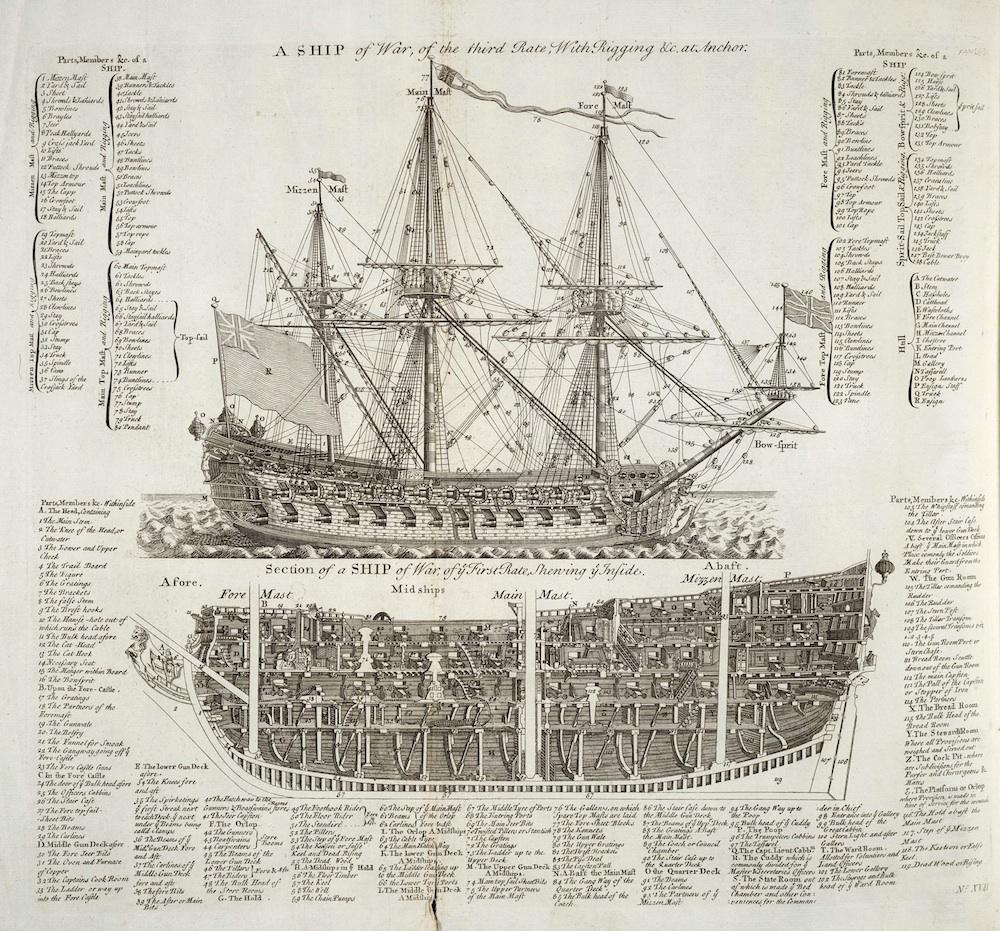The Vault is Slate’s history blog. Like us on Facebook, follow us on Twitter @slatevault, and find us on Tumblr. Find out more about what this space is all about here.
This illustration, used to demonstrate the rigging and interior setup of first- and third-rate British ships of war, appeared in Ephraim Chambers’ Cyclopedia, published in 1728. The book was one of the first English-language encyclopedias, and inspired Denis Diderot and Jean le Rond d’Alembert’s more famous project, published in France in the middle of the century.
The curators of the Royal Museums Greenwich point out that ships such as these evolved during a time of fairly constant naval conflict, between the First Anglo-Dutch War in 1652 and Napoleon’s defeat in 1815. In the 17th century, the Royal Navy standardized its ships, creating a system called the Establishment of Dimensions. A third-rate ship, such as the one whose rigging the top diagram here outlines, carried between 64 and 80 guns. A first-rate, such as the one cross-sectioned in the bottom diagram, carried between 100 and 120 guns. Both sizes of ship would have been big enough to participate in naval battles, in which ships lined up and fired at one another; such vessels were called “ships of the line.”
Chambers told his readers that the diagrams would give them “an Idea of the Several Parts and Members of a Ship, both Internal and External, with their respective Denominations in the Sea Language.” For readers without naval experience, the drawings—which depicted the vessel stripped bare and with all parts perfectly assembled, its human hands absent—represented the ship as a complicated and amazing machine.
Click on the image to reach a zoomable version, or visit the diagram’s page in the University of Wisconsin’s Digital Collections, which hosts a full version of Chambers’ Cyclopedia.

University of Wisconsin Digital Collections.